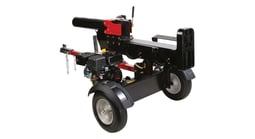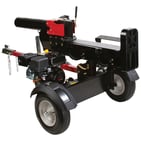What to do when the engine won't start on your Sears log splitter
A dirty carburetor, bad gasoline, failed spark plug or broken recoil starter can prevent the log splitter engine from starting.
Stale gas won't start the engine. If you left gas in the fuel tank for more than 6 months without adding fuel stabilizer, drain the tank and fill it with fresh gas. Add fuel stabilizer to gas to keep it fresh.
Bad gasoline can clog the carburetor, so clean and rebuild the carburetor if the engine doesn't start after replacing the gas in the fuel tank. Replace the carburetor if it's too clogged to clean.
A dirty spark plug won't ignite the fuel to start the engine. Complete a full tune-up that includes replacing the spark plug, air filter and oil.
If the recoil starter won't spin the engine when you pull the starter rope, then you'll likely need to replace the recoil starter.
Troubleshooting your Sears log splitter when its hydraulic cylinder won't extend the cutting wedge
A broken flexible pump coupler, clogged hydraulic fluid filter, failed hydraulic control valve, broken hydraulic pump or faulty hydraulic cylinder can prevent the hydraulic cylinder from extending the wedge on a log splitter.
Accessing the flexible pump coupler is fairly easy, so check that part first. The flexible pump coupler connects the engine drive shaft to the hydraulic pump. The coupler is designed to break if the hydraulic pump seizes up, protecting the engine from damage. Because the flexible coupler is plastic, the coupler can deteriorate over time and crack or break. Replace the flexible coupler if it's broken or damaged.
If the flexible coupler broke, try to rotate the hydraulic pump drive shaft with the drive shaft disconnected from the engine drive shaft to check for a locked-up hydraulic pump. If you can't rotate the hydraulic pump shaft, you'll likely need to replace the hydraulic pump. You'll also need to replace the hydraulic pump if it's leaking hydraulic fluid because the pump can't build up hydraulic fluid pressure to extend the wedge to split a piece of wood if its seals leak.
Hydraulic fluid leaking from the hydraulic control valve or hydraulic cylinder often indicates that the leaking part has failed. You'll likely need to replace the control valve and/or cylinder if they leak hydraulic fluid.
Although it doesn't happen often, a clogged hydraulic fluid filter can impede hydraulic fluid flow and prevent the cylinder from extending the wedge. Check the hydraulic fluid filter and replace the filter if it's clogged.

